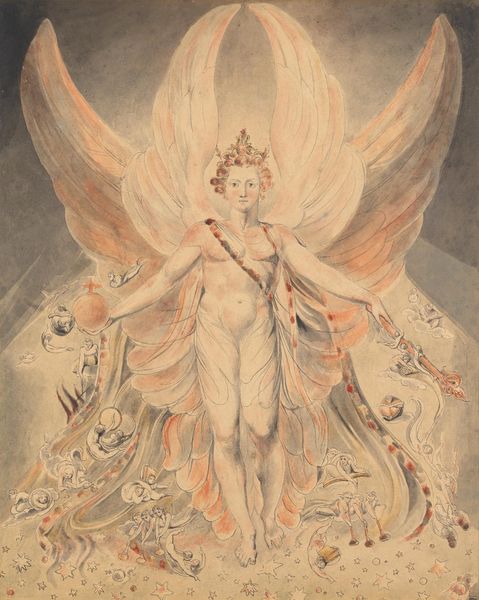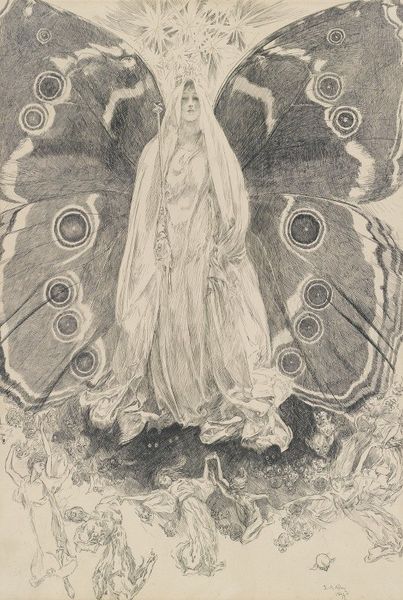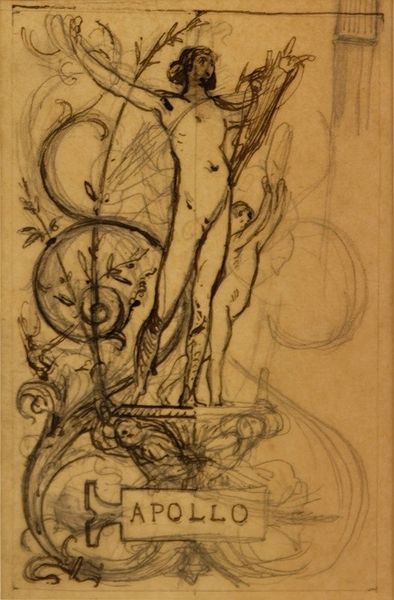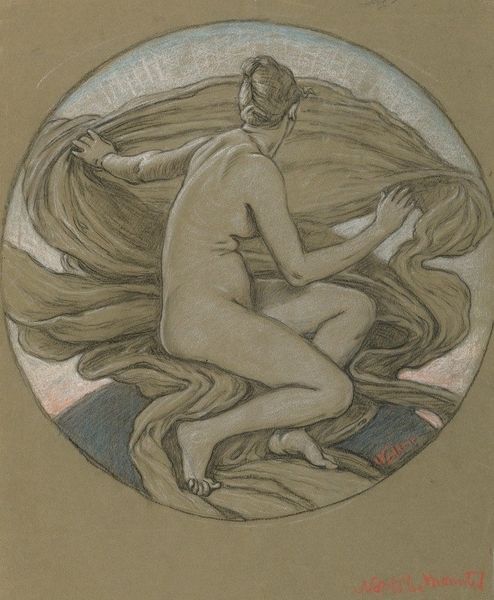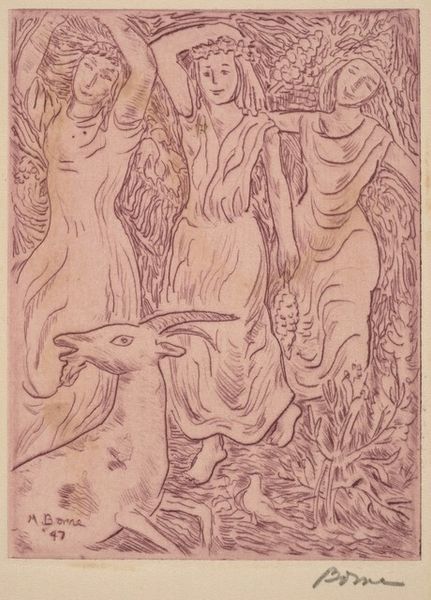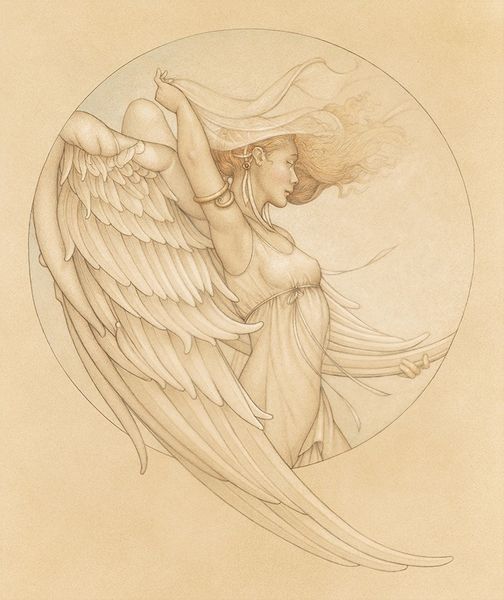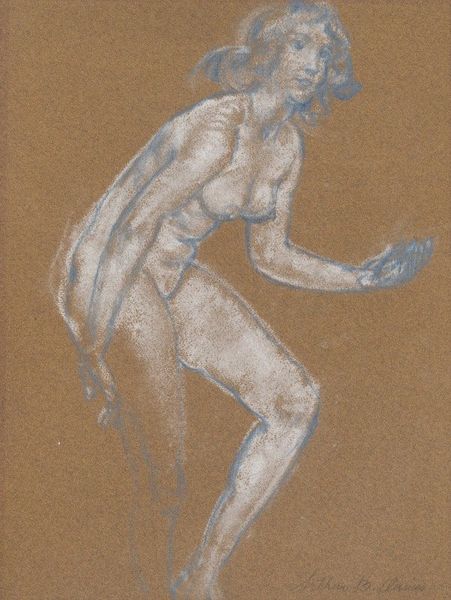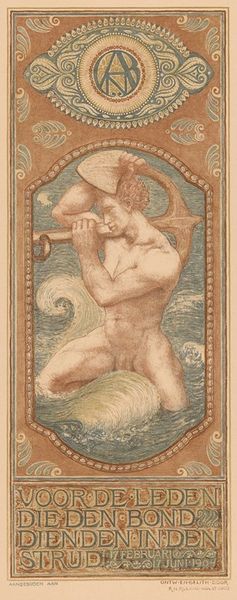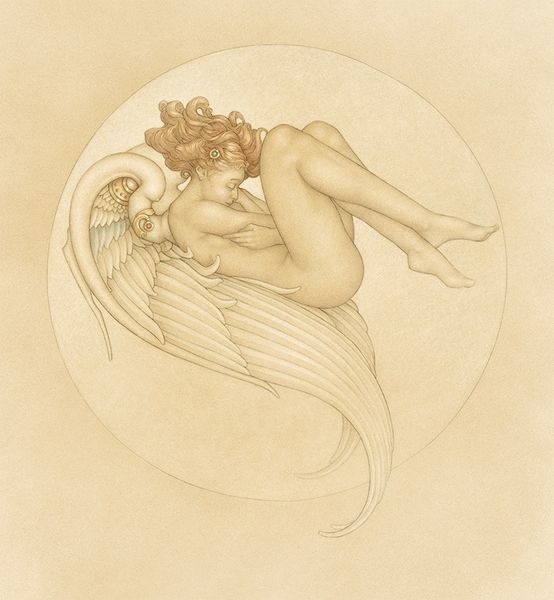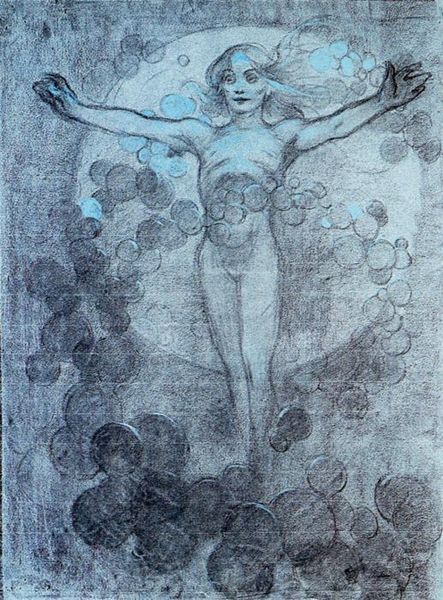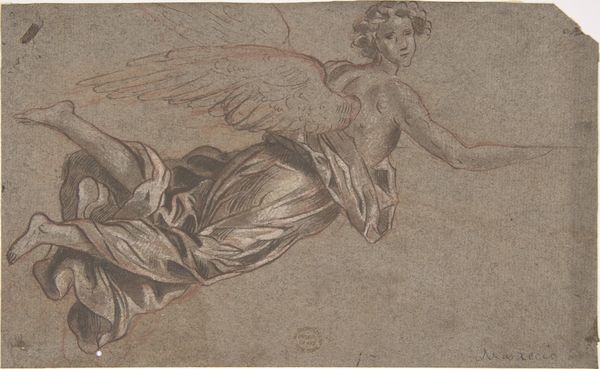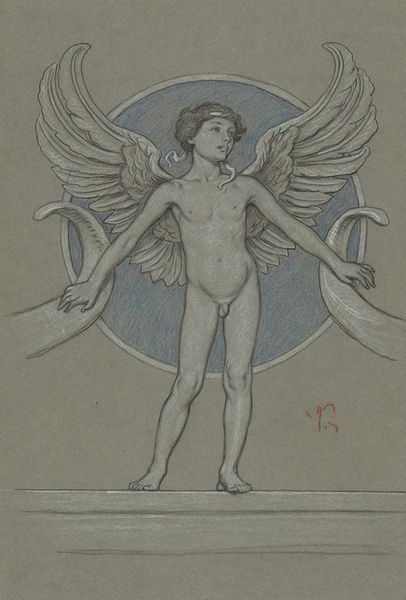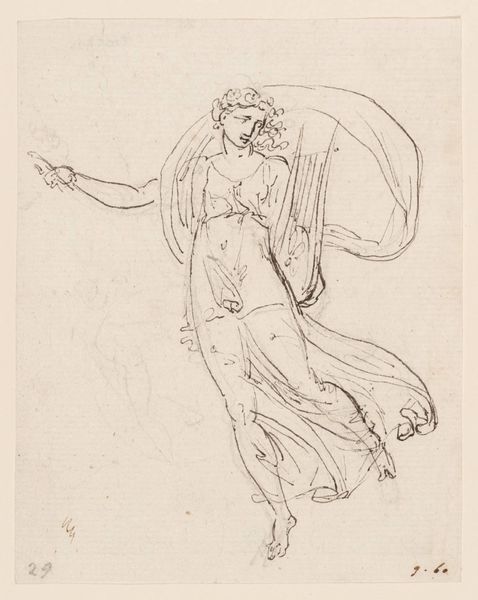
Copyright: Public Domain: Artvee
Edward Burne-Jones created "The Heart of the Lotus" with colored chalks on paper, a medium well suited to the ethereal quality of the image. It presents a sleeping woman cradled within the petals of a giant lotus flower. Burne-Jones, a prominent figure in the British Aesthetic movement of the late 19th century, was deeply influenced by the Pre-Raphaelites, who rejected the industrial age in favor of medieval, romantic subjects. Works like this one reflect the broader cultural context of Victorian England, a time of rapid social change and burgeoning interest in spiritualism and the occult. The lotus flower itself, drawn from Eastern religions, suggests a fascination with alternative spiritual paths, but also evokes the traditional, gendered motif of the 'sleeping beauty'. Art history provides the tools to understand this piece. By exploring the artist's life, his relationship to the Pre-Raphaelite Brotherhood, and the social conditions that shaped his artistic vision, we can appreciate how "The Heart of the Lotus" both reflected and challenged the norms of its time.
Comments
No comments
Be the first to comment and join the conversation on the ultimate creative platform.
